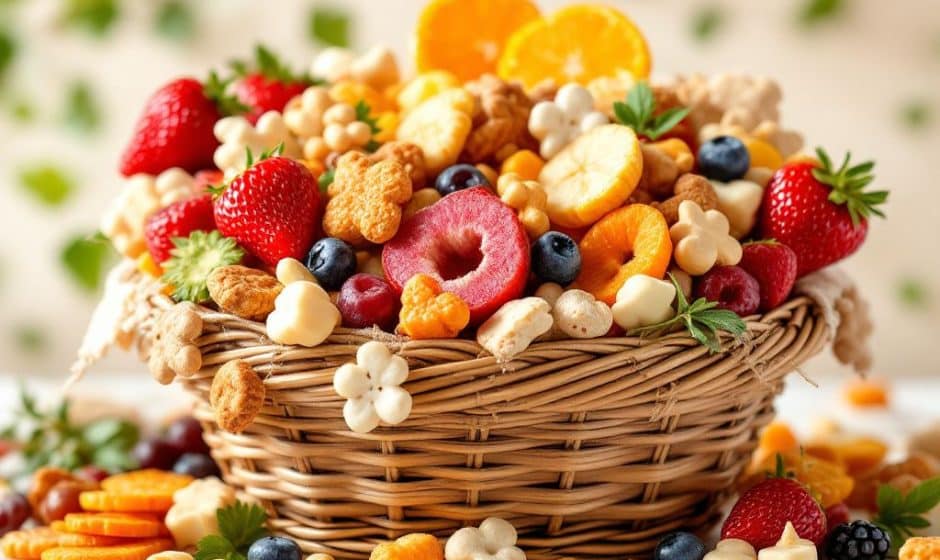Hey there! Ever find yourself halfway through the day, staring at your pantry, wondering which snack might keep you going without knocking your hormones out of whack? Yeah, me too. It’s not just about staving off hunger—it’s about picking foods that actually support your body’s natural rhythms. Enter hormone friendly snacks. These are not only delicious but also aligned with your body’s needs. Let’s dive in!
Why Hormone Balance Is Essential
Hormones are your body’s natural communicators. Think of them as the friendly dispatchers keeping everything running on time. When they’re in balance, you’re likely feeling energized, happier, and more focused. Toss them off-kilter with poor food choices, though, and you’ll quite literally feel the aftermath—fatigue, mood swings, bloating—the whole gamut.
How Snacks Impact Your Hormones
Now, you might be surprised just how much that seemingly innocent snack affects your system. The thing is, making the right picks can steer your hormones in the optimal direction, while some notorious ones could send them tumbling off course. The keyword here is “strategic”. Quick bites that prevent blood sugar spikes, fire up your metabolism, and tame inflammation are your best bets. Plus, they keep your stress main player, cortisol, in check. That’s what we call a snack strategy!
Building Your Snack Arsenal
So, let’s talk about which snacks to add to your lineup. Trust me, these aren’t flavorless or boring. With some, you might get a surprising culinary delight, opening new doors of snacking wonders. Let’s kick it off with some trusty seeds and nuts.
Nuts and Seeds: Tiny Powerhouses

- Flaxseeds: Loaded with lignans that help balance estrogen levels.
- Almonds: Packed with magnesium, a super helper in managing stress and landing solidly on your hormonal balance radar.
- Pumpkin seeds: High in zinc, these babies give a positive nudge to testosterone levels.
So keep these in grab-and-go containers. Pop’em in your bag! It’s like having little self-care bites at your fingertips.
Fruits: Nature’s Candy, Because Balance Can Be Sweet
Here’s the thing—fruits are not just sugar-bombs; they are hormone harmonizers.
- Berries: They’re bursting with antioxidants, giving your estrogen and progesterone the hand they need.
- Avocado: Creamy, delicious, and rich in monounsaturated fats. Avocados are like gold nuggets for stabilizing blood sugar levels.
- Bananas: With rich potassium content helping regulate cortisol and keeping stress at bay, they can be the buddy you’ve been looking for.
Veggies: Yes, They’re Snacks Too!
It turns out veggies can surprise you on the snacking front. Better yet, they’re oxidative stress fighters.
- Carrot sticks: Carrots contain carotenoids which your body converts to Vitamin A, crucial for producing sex hormones.
- Broccoli: Best buddies with phase-2 detoxification in the liver, helping balance estrogen.
- Kale chips: Hit them up for their vitamin C, raising those serotonin levels.
Got a flair for the dramatic? Add some hummus or spicy guac to bring out their full personality.

Yogurt: Creamy Sips of Pro-Card
Let’s not forget yogurt, especially the probiotic-rich type. It’s a probiotic superstar promoting gut health, indirectly taming any hormonal mayhem. Dairy is a personal choice—a good alternative for the non-dairy folk is unsweetened almond milk yogurt. Dress it up with some flax seeds for the ultimate hormone-friendly duo.
Dark Chocolate: Your Heavenly Indulgence
This is a not-so-guilty snack that is worth almost every desire-driven fight. Quality dark chocolate keeps your stress hormones down and your spirits high with a wealth of antioxidants. Aim for 70% and get that satisfying, bittersweet duo that creates a favorable leash on cortisol levels.
Putting It All Together
Once you’ve gathered your A-team of snacks, organizing them to suit your lifestyle is the next step. Keeping these snacks within reach means fewer impulses to reach for the stuff that really gives your hormones a run for their money. It’s worth investing a bit of time to portion them out for the week—for example, throw carrots and hummus or a nut-fruit-medley into mini containers on a Sunday evening. You won’t regret it come Wednesday afternoon, I promise!
Common Pitfalls and How to Avoid Them
It’s one thing picking the perfect snacks, but preparation is key. This journey also includes dodging some common snacking pitfalls:
- The Salty Temptations: Too much salt can heighten stress response; opt for unsalted nuts or season your own kale chips.
- Packaged Deals: Just because they say “natural” or “high protein” doesn’t always mean good news. Read those labels!
- Mindless Munching: Planned portions. You want deliberate choices, not mindless habits. Think: Those TED Talk-length podcasts are perfectly timed to a single snack session.
Rotating Your Snacks

Variety is vital for multiple reasons. It ensures a spectrum of vitamins and minerals, keeps your palate entertained, and helps avoid the monotony that leads to snack Slinghouetting, aka snack rebellion, where random, less friendly snacks creep in.
Everything Together: Sort of Like A Snack Smoothie
Well, think of it. By aligning foods that support your hormonal roles, you habitually feed your way into balance. From nuts offering quick energy bites to fruit’s gentle sugar support and veggie’s vitamins—all these not only curve cravings but also stabilize your internal environment’s communications.
Taking Small Steps
The beauty in this journey is in progressive action. Small, incremental changes lead to sustainable habits. Select a couple of snacks to start with and see how it dances with your current routine. Feeling overwhelmed? Don’t worry. Tweak, try, and find your sweet-spot lineup.
Snack Prep Success Stories
At this point, you might be wondering just how impactful changes in snacking can be. Many have found solace, accomplishments, and satisfaction at every crunch, nosh, and nibble. It’s turning those granola bars and ding-dong situations into fruit, nuts, and nutrient galore satiation. The difference is discernable, trust me on this.
If combining pleasure and purpose is at your core, hormone friendly snacks are the sustainable option to usher in well-supported nutrition. It’s about making choices with care, leading to an empowered feeling day throughout. Through snacking, you’ve championed thoughtful choices—and that deserves all the celebration. Here’s to snacking smarter for a harmonically balanced, happier you!
Frequently Asked Questions
What foods are best for hormone balance?
Foods that are rich in healthy fats, fiber, and essential nutrients are ideal for hormone balance. These include avocados, which support hormone production and insulin balance; cruciferous vegetables like broccoli, which aid in estrogen metabolism; leafy greens such as spinach and kale, which are rich in antioxidants and magnesium; and fatty fish like salmon, which provide omega-3 fatty acids crucial for hormone production[1][2][5).
How do leafy greens contribute to hormone balance?
Leafy greens like spinach, kale, and Swiss chard are packed with nutrients that support hormone health. They are rich in antioxidants, which reduce inflammation and aid in hormone production. Additionally, their high iron and magnesium content help prevent anemia and support cortisol regulation, promoting a balanced stress response[1][4][5).
What role do nuts and seeds play in hormone balance?
Nuts and seeds, such as almonds, walnuts, flaxseeds, and chia seeds, provide healthy fats, protein, and fiber that support hormone balance. They are rich in omega-3 and omega-6 fatty acids, which serve as building blocks for hormone production. Additionally, seeds like Brazil nuts are an excellent source of selenium, essential for thyroid hormone production and metabolism[1][3][4).
How does gut health impact hormone balance?
Gut health plays a crucial role in hormone regulation. Foods rich in probiotics, such as Greek yoghurt, support a healthy gut microbiome, which influences the body’s ability to produce and regulate hormones. Prebiotic-rich foods like leafy greens and berries also feed beneficial bacteria, enhancing the gut’s role in hormonal balance[1][4][5).
References



